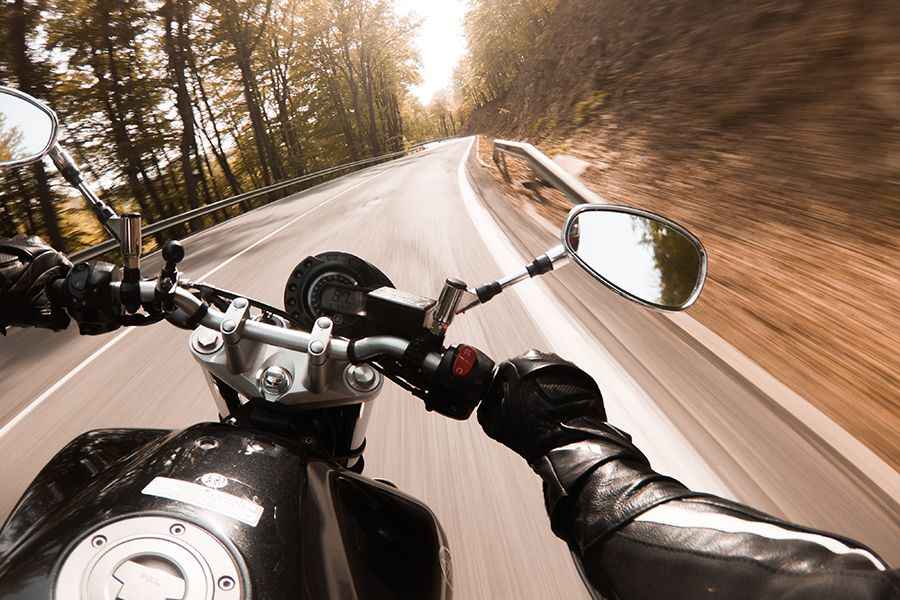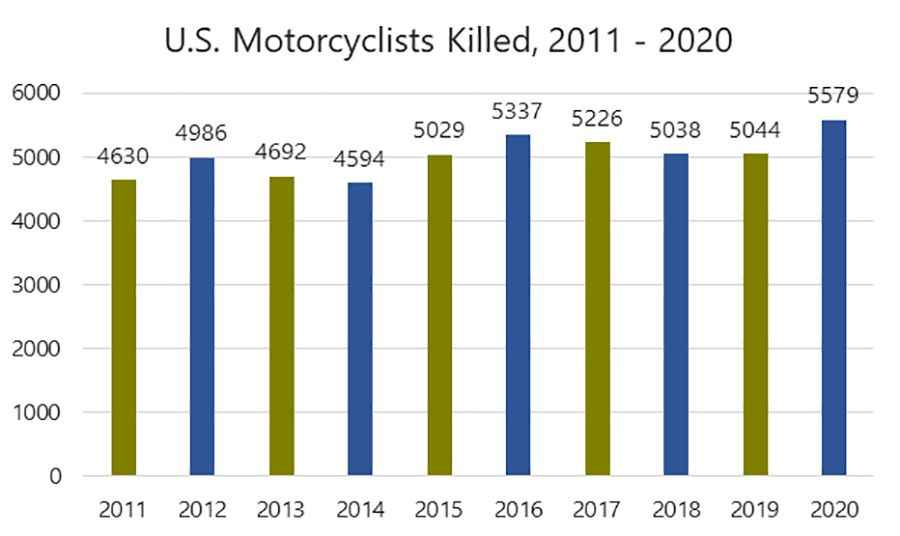How Can Motorists and Motorcyclists Coexist on the Road?
It’s easy to see how the speed, handling, and maneuverability of motorcycles has drawn in countless riders across the United States since the vehicle was first invented in the 19th century. Add in the ease of parking in crowded cities and lower gas costs than traditional cars and trucks, and the appeal of the motorcycle only grows! However, while motorcycles offer a quick and effective way to get around, they also lack the protections of traditional motor vehicles.

In the event of a crash, a motorcyclist isn’t fortunate enough to be protected by precisely designed crumple zones, airbags, and a seatbelt. A biker will most likely to take the entire brunt of an unexpected impact, which poses serious risk to their health in even a moderate crash. Given the inherent risks to bikers on the road, how can they work with other motorists and civil engineers to create a safer experience for everyone? In this article, we explore how everyone involved in the creation and use of local roads and highways can collaborate to make biking a little bit safer in the U.S.
Fatal Motorcycle Crash Statistics, 2011-2020
Before we dive into the ways that riders, drivers, and engineers can work on making the road a safer place for motorcycles, let’s explore why this is a worthwhile goal to begin with. Every year, thousands of motorcyclists are killed and tens of thousands more suffer injuries while riding. From 2011 to 2020, the National Highway Traffic Safety Administration (NHTSA) has reported at least 4,630 motorcyclists killed annually. While some of these accidents are certainly due to unpreventable factors such as weather or sudden vehicle failures, others are entirely preventable with better road architecture and driver awareness.
A complete breakdown of motorcycle crash fatalities from 2011 through 2020 can be seen below:

What Injuries Can a Motorcyclist Sustain in a Crash?
Given how vulnerable to harm a biker is during a crash, it’s hardly surprising that even a seemingly minor crash can cause severe injuries. The Hill Law Firm notes that:
- Motorcyclists are 35x more likely to die in a wreck than the driver or passenger of a motor vehicle
- Brain and head injuries are the leading cause of death in a motorcycle crash
- Motorcyclists that choose not to wear a helmet are 40% more likely to be killed by a head injury than a biker wearing a safe helmet
How Can Roads & Highways be Better Designed to Support Motorcyclists?
It is an undeniable fact that modern roadways are primarily designed to cater to cars, trucks, and other traditional motor vehicles. Elements of roadway design that might seem inconvenient to someone in a car (uneven roads, potholes, construction work, and poorly located manholes) might well be dangerous or even fatal to someone on a motorcycle. Even raised lane dividers or impact-absorbing concrete blocks, meant to reduce the impact of a car crash, are as capable of causing lethal harm as they are of helping a motorcyclist involved in a wreck.
Crash barriers were designed to protect the majority of vehicles and their operators, which means that they are most effective at reducing the impact of cars and heavy vehicles during a collision. From concrete barriers to wire rope barriers, a biker who contacts the impact-reducing system is likely to be seriously or even fatally injured. A rolling barrier without gaps small enough for a rider to get stuck in may offer a slightly less risky means of absorbing a motorcyclist’s impact.
Roadway planning, creation, and upkeep also leaves much to be desired in some cases. A road with sharp curves that reduce visibility may be particularly deadly for motorcyclists, as they may be unable to react to a situation out of their sight quickly enough to avoid a crash. Roads and highways that are poorly maintained also pose a great risk to riders, as a sizeable pothole or gravel patch may be enough to dismount a motorcyclist. By prioritizing the design and repair of safe roadways, riders will be at much lower risk of harm or death.
How Drivers Can Better Protect Motorcycles Around Them
While it’s easy to pin the alarmingly high number of motorcycle crashes and fatalities on poorly designed roads and other flaws outside the average person’s control, the behavior of individual drivers does play a role in collisions. There are multiple ways that drivers can become better allies to the motorcyclists sharing the road with them, such as by:
- Staying focused on the road: Limiting distractions, from cellphone use to disruptive passengers, allows a motorist to focus fully on the road and react quickly to dangerous conditions. By staying alert and keeping an eye out for motorcycles, a driver protects themselves and those sharing the road.
- Driving sober: Impaired drivers have significantly slower reaction times, poorer decision making, and may be unable to maintain control of their vehicle. Impaired driving is a threat to everyone on the road and should never be encouraged or accepted.
- Staying aware of motorcyclists around them: Particularly in states where lane splitting is allowed, it’s essential to constantly check your surroundings for motorcycles. Many collisions occur when a biker is lane splitting through heavy traffic and a driver accidentally cuts them off or merges into them.
- Accurately judging a motorcycle’s distance: Motorcycles can travel at considerable speeds, and it’s easy to underestimate how quickly they are approaching you. Try and give as much space to bikers in front of and behind your vehicle, so they can react to potential hazards without running into or being struck by your car.
- Be careful when opening car doors: Check your mirrors to make sure there is not a passing motorcycle if you’re parked on a street.
- Slow down when passing through intersections: A significant number of crashes occur when a driver fails to notice a motorist waiting at or passing through an intersection.
- Don’t rely on turn signals: Motorcycles have smaller turn signals than standard cars, and it may be difficult to see the turn indicator in bright sunlight. Don’t expect that a biker will always display a turn signal before they change lanes or make a turn.
How Can Motorcyclists Protect Themselves on the Road?
While drivers and civil engineers have a duty to protect motorcyclists on the road, bikers can also proactively act to keep themselves safe. Some of the ways in which they may do so include:
- Checking the weather before departing: Inclement weather is frequently more dangerous for bikers than drivers, since poor weather may lower visibility and create serious hazards for motorcycles. When you must ride in poor weather, be certain to leave a significant amount of room between your bike and other vehicles.
- Wear appropriate motorcycle gear: Motorcycle gear can protect you from debris, poor weather, and road rash. A DOT-approved helmet may safe your life in a crash by preventing a serious head or spinal injury.
- Inspect your bike before riding: Check that your turn signals, lights, brakes, horn, and mirrors function properly.
- Be as visible as possible: Whenever possible, stay out of other vehicle’s blind spots. Ensure that your headlights are on whenever there is low visibility, even during the day. Avoid dark clothing, as it may make you harder to see.
- Stay alert for potential road hazards: Drive defensively and stay focused on the road, so you don’t overlook any potential road hazards. Potholes, bumps, sand, gravel, and other obstructions can dismount even an experienced rider.
Working Together, We Can Reduce the Risks to Motorcyclists
Through the combined efforts of drivers, bikers, and civil engineers, we can make our roadways safer for motorcyclists and the drivers around them. By encouraging the design and upkeep of safe roadways, staying aware of our surroundings, and using the road responsibly, everyone can enjoy a pleasant trip to their destination.